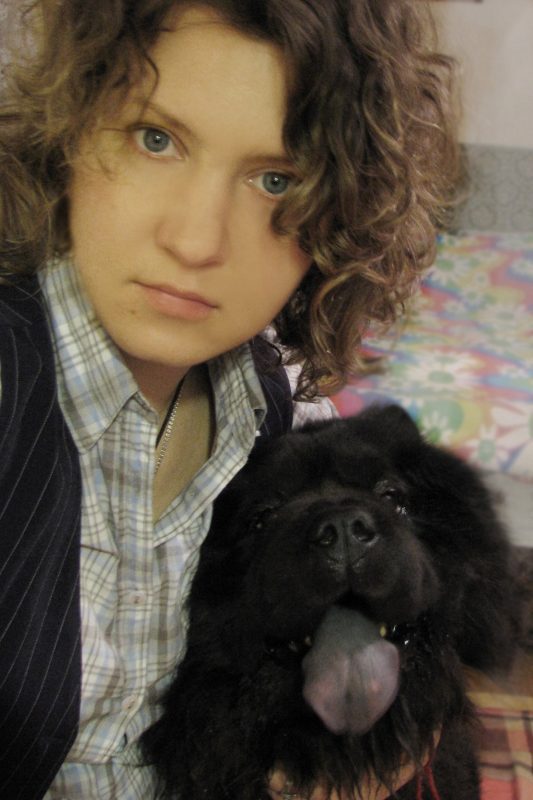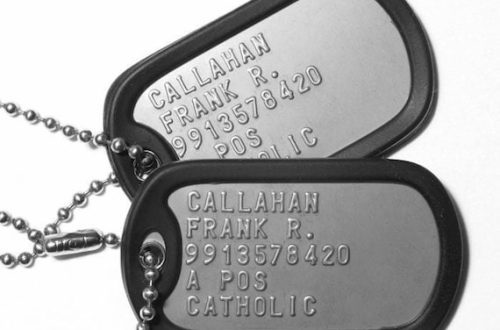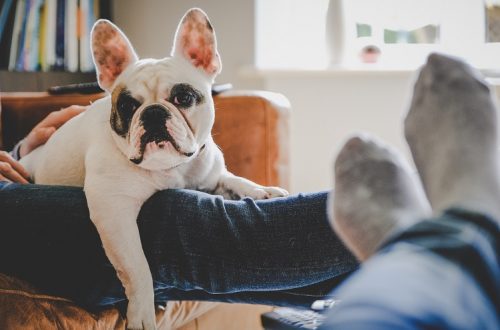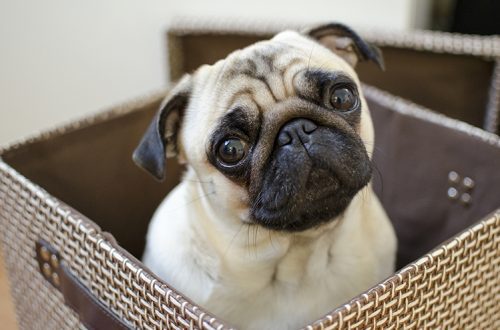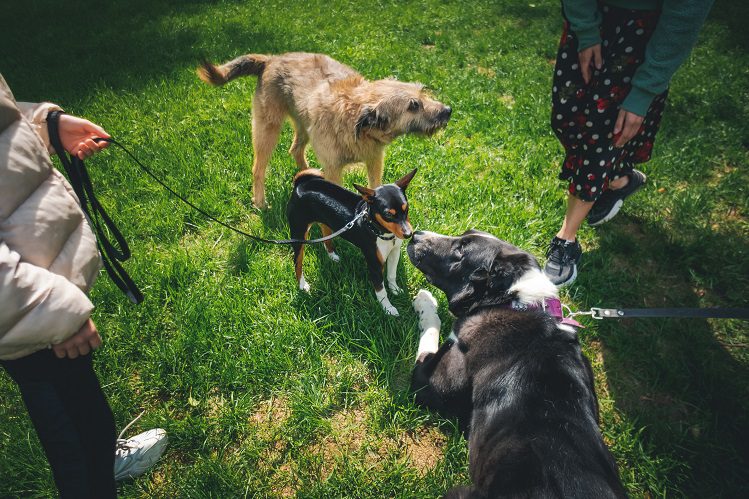
How long should you walk your dog?
How long should you walk your dog and how often? Let’s clear this up once and for all.
Dogs go outside not only to cope with natural needs under a bush. Walking is also important for a number of other needs.
- Keeping fit
No matter how spacious the house is, only on the street will the dog be able to run and play enough. If a pet is walked very rarely, this will not be the best way to affect its appearance and health.
Dogs are by nature very active and inquisitive creatures (with a few exceptions), who need to splash out their accumulated energy.
- Development of thinking
In your apartment, everything is familiar to the dog, because he has long studied every corner up and down. But on the street, an interesting and wonderful world, full of new information, opens up to a moknosik. Here another dog recently walked, which marked a lamppost. And here, the yard cats sorted things out in the morning. For you, all this seems absolutely unimportant, but this is how the dog learns the world and learns to analyze. And developing thinking for dogs is just as important as maintaining muscle tone.
- Communication with peers
Imagine that you would sit at home all day and not communicate with people at all. An unenviable fate, right? The same applies to our pets. It is very important for them to contact with relatives, get to know them, play and have fun together.
Only a sociable dog will be predictable and safe for others. Socialization is extremely important for all four-legged animals without exception.

- Opportunity to get closer
If you have to go to work and be away until the evening, you can communicate and strengthen friendship with your dog on walks through joint games, training and the usual promenade in the park. Communication with the owner is necessary for every dog.
So we’ve made it clear that walking is a very important part of any dog’s life. However, not all dogs need games, physical activity and long walks back and forth.
It is important to take into account some points in order to determine the appropriate number of walks and their duration for your favorite ponytail. We will talk about this further.
Let’s answer right away – no. To determine the optimal time for walking, it is important to consider not only the breed of the dog, but also other aspects. But first things first.
- Breed
There are very energetic breeds that need not just walks, but active movements and games.
Do not think that the larger the dog, the more time it needs to walk. Compact Jack Russell Terriers are known for their restlessness and restlessness, so short and slow walks are definitely not for them. Some large dogs (St. Bernard, Newfoundlen, Chow Chow, American Bulldog, etc.). – on the contrary, real phlegmatic people and couch potatoes, they just like unhurried, calm walks.
Decorative and mini-dogs can walk for 1 hour a day. They don’t really need energetic games, and part of the walk can go in the hands of the owner. Smaller breeds are perfectly accustomed to a diaper or tray and are unlikely to be enthusiastic about going outside in inclement weather.
On average, active dogs are advised to walk at least 2 hours a day, ideally 4 hours. However, if you do not have time today, then you can safely reduce the time of the walk. There are special games in order to “exhaust” the dog faster.
Companion dogs are walked not only for the sake of maintaining physical fitness, but also for the sake of socialization. The more such a dog will run, play and communicate with relatives, the better. It is extremely important to train and educate such a dog from puppyhood.
Choose a dog depending on your work schedule and daily routine. If you spend a lot of time outside the house and cannot walk your dog for long periods, it is better to get a small and inactive dog (Chihuahua, Pug, Yorkshire Terrier, Maltese, etc.).
- Age
You need to walk with kids often, but not for long: 4-6 times a day for 10-15 minutes. This is due to the fact that puppies still do not know how to control their natural urges and adjust to the schedule. But the older the four-legged becomes, the less the number of walks should be, but more time for each exit from the house.
With adults, on average, walk 2-3 times a day. They can endure until the next trip to the toilet 10-12 hours.
But pay attention, everything is purely individual. There are dogs that may want to go to the toilet again 5 hours after walking. Then you need to adapt to the characteristics of the body of your pet.
- The period of estrus, pregnancy, lactation
Walk females in heat as usual, but slightly adjust your exit to the street. Firstly, an estrous dog attracts a lot of unnecessary attention from males, so leave the house 1-2 hours earlier or later than other dog owners. Secondly, try to walk in quiet places where there are no other four-legged animals. And, of course, do not allow uncontrolled mating.
Pregnant females can be taken outside more often, up to 3-4 times a day, because. the uterus presses on the bladder, and the dog wants to go to the toilet more often.
Lactating dogs are walked as usual, except that they put on special clothes that cover the nipples from damage.
- Weather conditions and season
In the summer heat, it is better to walk the dogs in the morning and in the evening: before 12 o’clock and after sunset (or when it is just beginning to set).
In the cold season, stay outside should be reduced so that the pet does not have time to freeze and catch a cold. If the dog is very cold, you can buy clothes for him.
Look at the state of your ward. If you see that he is cold, hot, or he does not feel enthusiastic about walking, it is better to go home.
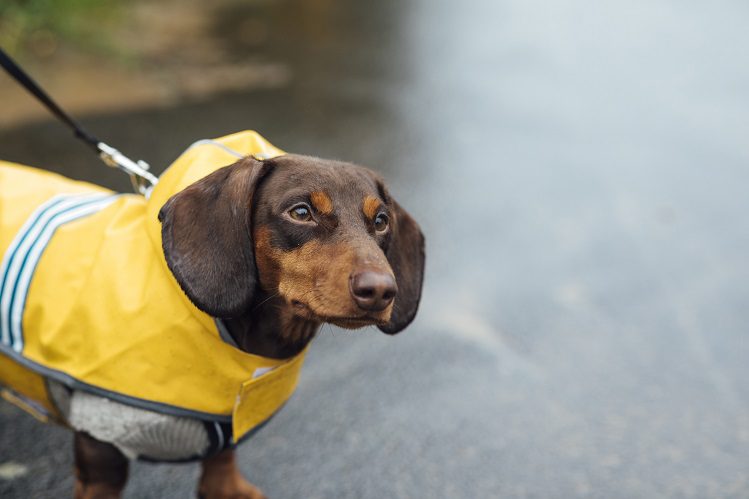
- Diseases
Much depends on the diagnosis of the dog. Pets with infections should be isolated from other dogs. The time spent in the open air depends on the well-being of the wet-nosed person, but in any case, walks should not be long.
With cardiovascular diseases, fresh air will be very useful for the dog. It is worth walking measuredly and leisurely, but if the pet wants to run a little, you should not disturb him. However, at the first sign of malaise, it is better to stop the load.
Diseases of the genitourinary system require frequent access to the street, because. the dog may want to use the toilet “in a small way” more often than usual. In this case, the number of exits to the street increases up to 6 times.
With problems of the musculoskeletal system, physical activity is prohibited: running, jumping, performing tricks, etc. Limit yourself to a leisurely walk.
Be sure to supervise your sick pet and follow all the recommendations of the veterinarian regarding walking.
- your free time
You need to walk with the dog from 40 minutes and 2 times a day – this is the bare minimum. And this is if you are a busy person and do not have free time. In a different situation, walk with your pet as much as you want, even all day! The main thing is that this time is enough for both of you to play enough, talk and get tired properly.
Sometimes you can hear statements that the first walk with the dog should take place very early, at 5 or 6 in the morning. Actually this is a myth. If you teach your dog to your schedule, he will dutifully endure until the time is convenient for you. Of course, if you have to be at work at 7 in the morning and no one else can walk the dog except you, you will have to leave the house at 5 o’clock. But if not, with a clear conscience, let yourself and the dog sleep.
It doesn’t matter what time you and your dog go out. Much more important are the rituals, thanks to which the dog adapts to you.
It doesn’t matter what time you and your dog go out. Much more important are the rituals, thanks to which the dog adapts to you. For example, before walking, you and your pet must have breakfast, do exercises, then give each other “five” and after that you are going to the street.
So the dog will understand after what action you will go for a walk with it. It is very important for pets to live according to a predictable and clear routine.
We hope that we answered all the questions that caused you doubts. Take care of yourself and your beloved ponytails!
The article was written with the support of an expert:
Nina Darcia – veterinary specialist, zoopsychologist, employee of the Academy of Zoobusiness “Valta”.
